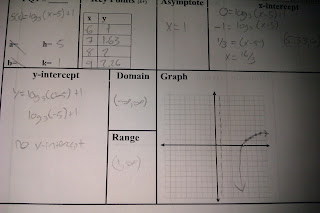Unit I Student Problem 3
Unit I Student Problem 4
Unit J Student Problem 5
In this unit I created and solved a problem for PFD which stands for Partial Fraction Decomposition. First I start by adding the numerators together via Algebra 2 skill in which I multiply the numerators and the denominators by which terms they are missing from the denominator. After I have done that I then separate the original problems using variables such as A,B,and C for the numerator instead of the original numbers. I then make the common denominator the same way i did to the previous step. The next step is to add all the like terms and put them equal to the numerator that I have found when I solve for the common denominator. After you remove the x^2 and x so that you can solve for A,B, and C.I notice that there is one variable that I can easily solve for, I solve for it. Before I plug in the variable that I already have I first eliminate a variable from the two previous equations. I do this by multiplying a constant if needed. After I have removed a variable I can now plug in the term that I had found earlier and solve for the second term. I now have two terms and can plug both of them into any of the original three equations that I have constructed. After plugging them in and solving for the last variable I can check my answer if it matches the original equation that I had constructed in the beginning of the problem.
Unit J Student Problem 6
In this unit I created and solved a problem for PFD which stands for Partial Fraction Decomposition. First I start by adding the numerators together via Algebra 2 skill in which I multiply the numerators and the denominators by which terms they are missing from the denominator. After I have done that I then separate the original problems using variables such as A,B,and C for the numerator instead of the original numbers. I then make the common denominator the same way i did to the previous step. The next step is to add all the like terms and put them equal to the numerator that I have found when I solve for the common denominator. After you remove the x^2 and x so that you can solve for A,B, and C.I notice that there is one variable that I can easily solve for, I solve for it. Before I plug in the variable that I already have I first eliminate a variable from the two previous equations. I do this by multiplying a constant if needed. After I have removed a variable I can now plug in the term that I had found earlier and solve for the second term. I now have two terms and can plug both of them into any of the original three equations that I have constructed. After plugging them in and solving for the last variable I can check my answer if it matches the original equation that I had constructed in the beginning of the problem.
Unit K Student Problem 7





No comments:
Post a Comment